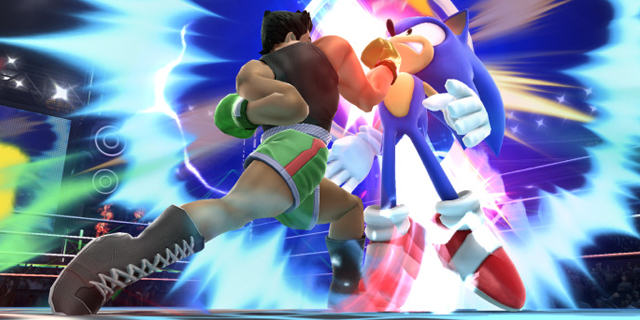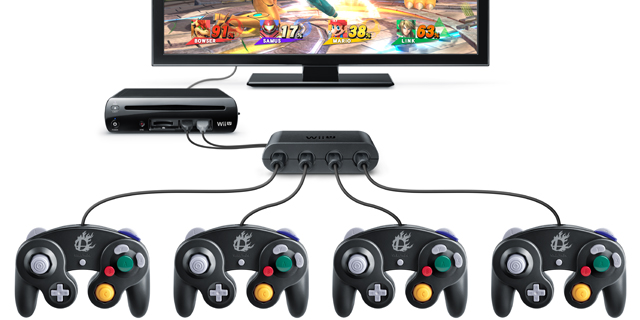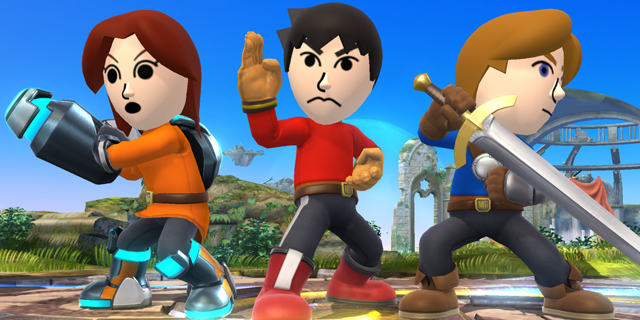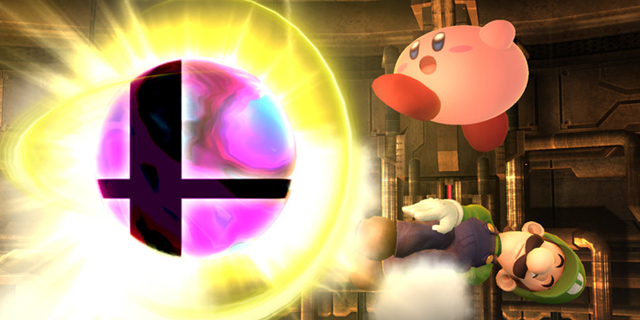
After months of brief gameplay teasers at previous press events, Nintendo finally allowed fans and media a shot at playing Super Smash Bros. for Wii U for themselves. We tested out the new title to see how it compares to the previous games, check out the new fighters and analyze how it will play in the competitive Smash scene.
What it is: The follow-up to 2008’s Super Smash Bros. Brawl and part of a simultaneous development process with its 3DS cousin, Super Smash Bros. for Wii U aims to bring the series to modern consoles. As always, there are new fighters (like Pac-Man and Wii Fit Trainer) and stages (like Skyloft and Wily Castle), but this Smash aims to both update its suite of online modes and mend fences with those who prefer tournament-style play. It even brings back GameCube controllers through a special adapter. More casual players will enjoy other additions, like Mii Fighters and maybe even the compatibility with upcoming Amiibo NFC figures.

High-level play thoughts
The game feels like a big step in the right direction after Brawl. Right now, though the slower speed on everything else is okay (though I’d prefer it slightly faster), the recovery time on landing really feels like too much. Also, the damage required to knock people off is quite high. Five-stock matches will time out too often with two high-level players if the damage percentage stays how it is now, especially in the “For Glory” mode that will attract most expert-level players. Combos will likely end up being much more like Brawl than Melee, which isn’t necessarily bad, but will disappoint those hoping for a return of that style. – Christian Stewart
Why we’re excited: One of the most divisive elements in Super Smash Bros. has been character movement. While Melee had players falling and flying through the air in a more rapid manner, Brawl was far slower, making timing combos more difficult. The speed of this title feels a lot closer to Brawl than Melee, with recovery timing, hit stun and general movement all feeling a bit sluggish to Melee partisans. That said, the gravity seems to have been turned up a few notches from Brawl, even on the lighter weight characters like Fox. This means that novice players will continue to have a generally balanced playing field, even as the balance tiptoes back toward what tournament players would prefer.
During our time with the game, we were able to play as Rosalina and Palutena, two of the new additions to the Smash roster, as well as returning fighter Samus. Rosalina plays like a more mobile Zelda, with much lower gravity than the average brawler, making keeping distance between you and your opponents while jumping in at opportune times with ranged attacks an ideal strategy. Unlike Zelda, though, she doesn’t quite have the pure knockback power, but her throws can be much more effective.

Palutena, on the other hand, is best described as a mix between Pikachu and Fox. She has the ability to teleport and a suite of mid-range attacks, but she’s a larger, slower character with a focus on deflection. She’s very versatile, but is best when staying out of the fray and picking off enemies. Samus, even without the Zero Suit form, feels very similar to her old self, though more time will likely reveal some key differences in higher-level play.
What we’re wondering: Our time with the game was limited, so we’d really love a deeper look at the game’s new roster and modified mechanics. Also, we know the lineup isn’t completely announced, and those remaining fighters could be very interesting. More than that, just exactly how much will the tournament scene embrace the new entry, given its series of half-steps toward accommodating their desires? Will the game’s balance be as honed as the development team is hoping? And how will Amiibo factor in?

Super Smash Bros. for Wii U is slated for a launch sometime this holiday. Its 3DS counterpart will arrive earlier, hitting the U.S. on October 3.
Christian Stewart and Graham Russell contributed to this report.



















